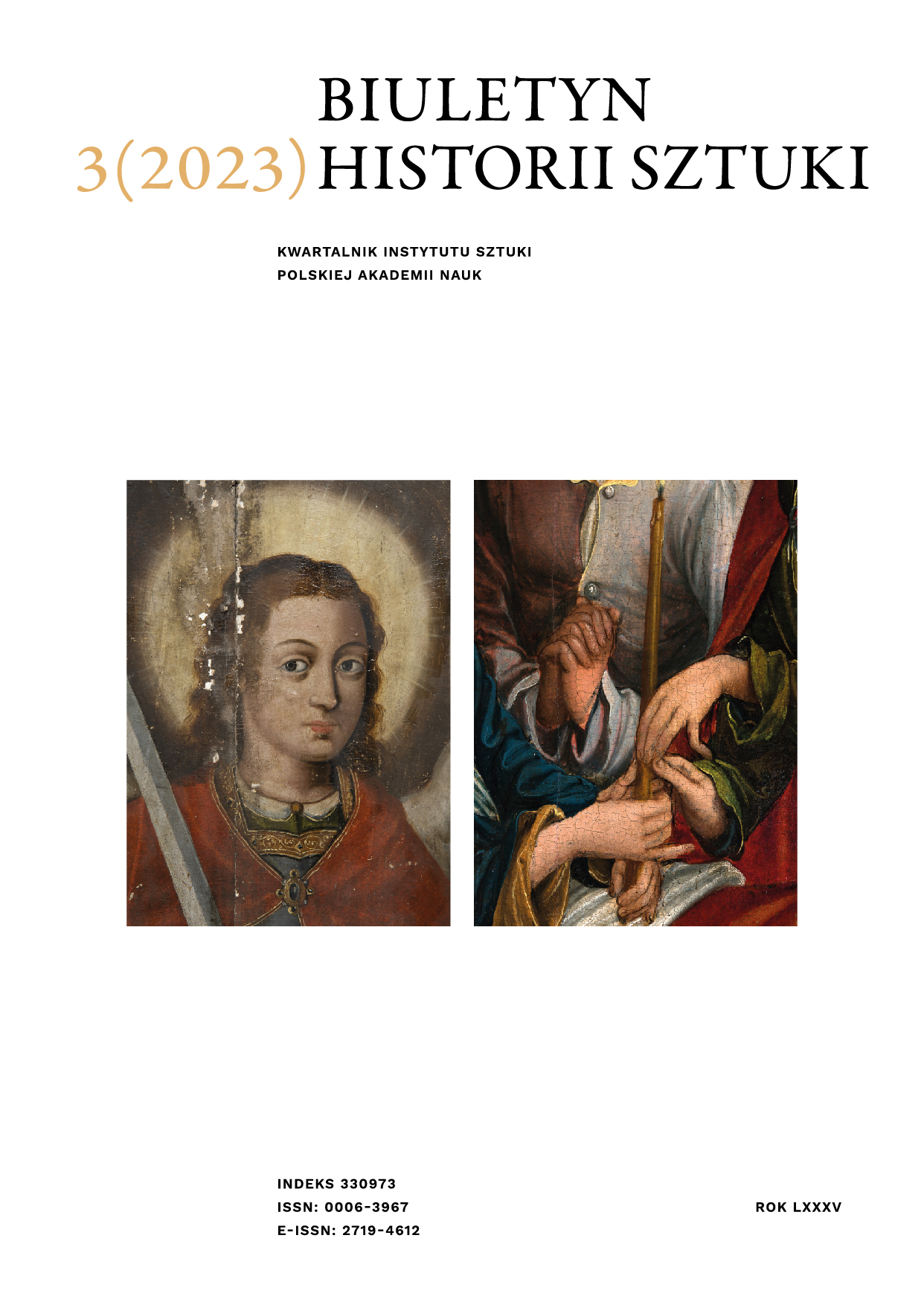Rzeźbiarze i stolarze pracujący
dla opactwa cysterskiego w Krzeszowie
w 2. połowie XVII i na początku
XVIII wieku. Mit przyklasztornego warsztatu
Georga Schröttera
Sculptors and Woodcarvers Working for the Cistercian Abbey in Krzeszów in the Second Half of the 17th and the early 18th Century. The Myth of Georg Schrötter’s Monastery Workshop
Author(s): Artur KolbiarzSubject(s): Visual Arts, Local History / Microhistory, 17th Century, 18th Century, History of Art
Published by: Instytut Sztuki Polskiej Akademii Nauk
Keywords: Krzeszów; Georg Schrötter; Baroque sculpture; Baroque sculpture in Silesia; woodcarving; Silesian art; art in the Habsburg Monarchy;
Summary/Abstract: Artistic projects created within the framework of the Cistercian patronage in Krzeszów are among the most important achievements in Baroque architecture and sculpture in Sile- sia. The current article attempts to thoroughly verify the existing knowledge regarding the modernisation of the furnishings and decoration of the medieval abbey church in Krzeszów, carried out in the second half of the 17th and the early 18th century, and to consider the guild practices of the sculptors and carpenters working for the Cistercians at that time. On the basis of archival sources and early printed materials, the author concluded, contrary to previous findings, that the craftsmen working in Krzeszów were not employed in one workshop under the management of the sculptor Georg Schrötter, but in separate workshops cooperating with each other – a fact that may have an impact on the issues of attribution and dating of the activity of individual groups of artists. Schrötter produced only the figural sculptures, while the altars and other furnishings together with their ornamentation were designed and made by the woodcarvers Stephan Kose and Christoph Hoffmann. In addition, Hoffmann did not start working for the Krzeszów abbey after Kose’s death in 1698, as hitherto thought, but had been employed there since the mid-1670s.
Journal: Biuletyn Historii Sztuki
- Issue Year: 85/2023
- Issue No: 3
- Page Range: 83-108
- Page Count: 26
- Language: Polish

